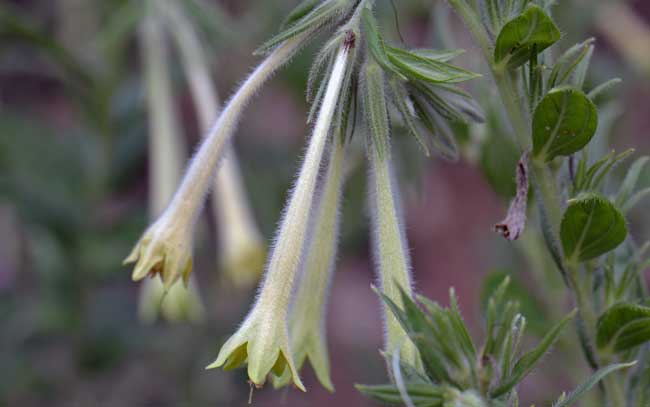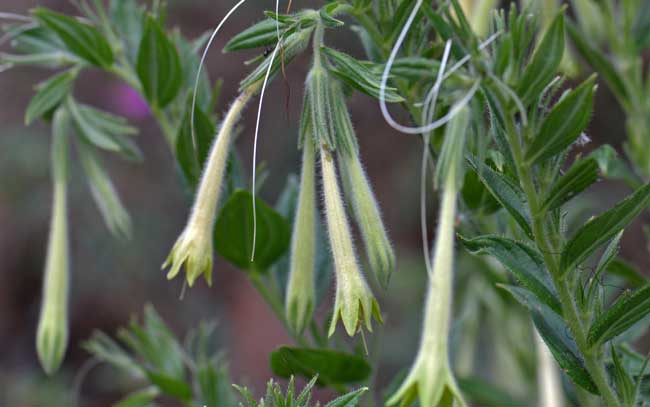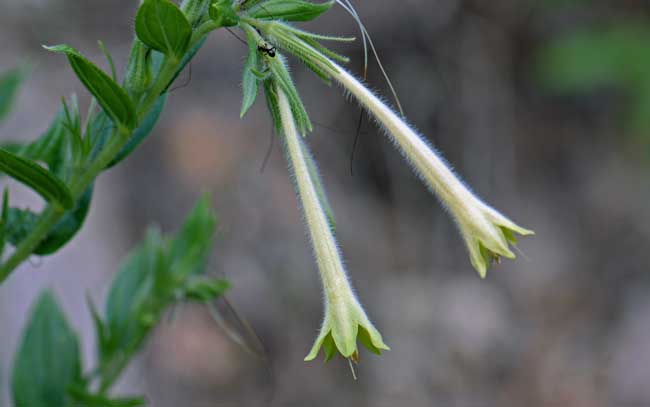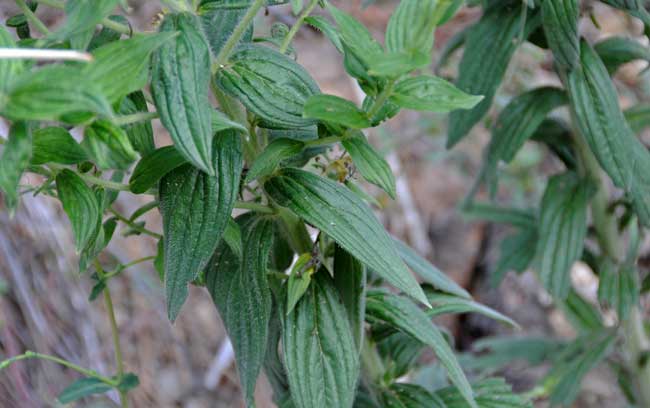Macromeria viridiflora, Giant-trumpets




Scientific Name: Macromeria viridiflora
Common Name: Giant-Trumpets
Also Called: Giant Trumpets, Gianttrumpets, Green-flower Macromeria, Thurber's Giant-trumpets
Family: Boraginaceae, Forget-Me-Not Family
Synonyms: ()
Status: Native
Duration: Perennial
Size: Up to 30 inches or more.
Growth Form: Forb/herb; erect, hairy throughout, multiple vertical stems.
Leaves: Green; leafy plants, leaves with distinct parallel venation (see photo above).
Flower Color: Yellow or greenish-yellow; heavy pubescence, flowers trumpet shaped, up to 2 or more inches long along coiled (scorpioid) cyme on tips of branches.
Flowering Season: July to September.
Elevation: 6,000 to 9,000 feet.
Habitat Preferences: Rocky slopes and valleys in Pine woods between 6,000 and 9,000 feet elevation.
Recorded Range: Relatively rare in the United States where it is found only in Arizona and New Mexico.
North America & US County Distribution Map for Macromeria viridiflora.
U.S. Weed Information: No USGS data listed.
Invasive/Noxious Weed Information: No USGS data listed.
Wetland Indicator: No USGS data listed.
Threatened/Endangered Information: No USGS data listed.
Macromeria viridiflora var. thurberi, Thurber's Giant-trumpets; and
Macromeria viridiflora var. viridiflora, Giant-trumpets Variety "thurberi" is found in New Mexico and has much larger corolla tubes, up to 3 inches.
Comments: Giant-trumpets are members of the Boraginaceae family which is primarily comprised of bee or insect pollinated plants, with their very small flowers. Giant-trumpets however have large deep corolla tubes and are pollinated by hummingbirds.
According to Arizona Flora, the Hopi dried the leaves and flowers, mixed them with tobacco, and smoked them in ritual rain-dance ceremonies.
Giant-trumpets has several ethno-botanical uses identified at Native American Ethnobotany, University of Michigan, Dearborn.

